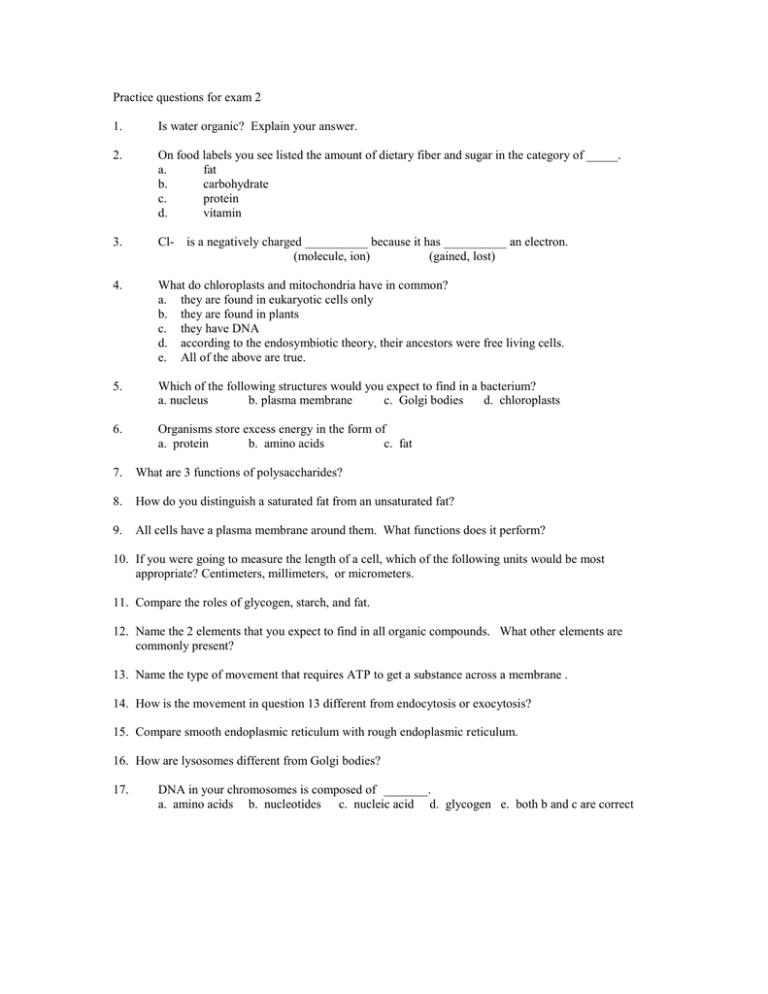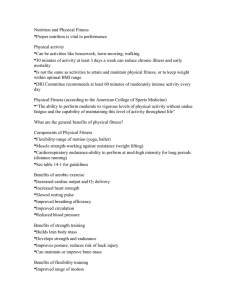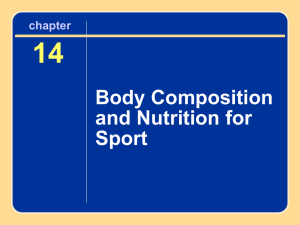Practice questions for exam 2
advertisement

Practice questions for exam 2 1. Is water organic? Explain your answer. 2. On food labels you see listed the amount of dietary fiber and sugar in the category of _____. a. fat b. carbohydrate c. protein d. vitamin 3. Cl- 4. What do chloroplasts and mitochondria have in common? a. they are found in eukaryotic cells only b. they are found in plants c. they have DNA d. according to the endosymbiotic theory, their ancestors were free living cells. e. All of the above are true. 5. Which of the following structures would you expect to find in a bacterium? a. nucleus b. plasma membrane c. Golgi bodies d. chloroplasts 6. Organisms store excess energy in the form of a. protein b. amino acids c. fat is a negatively charged __________ because it has __________ an electron. (molecule, ion) (gained, lost) 7. What are 3 functions of polysaccharides? 8. How do you distinguish a saturated fat from an unsaturated fat? 9. All cells have a plasma membrane around them. What functions does it perform? 10. If you were going to measure the length of a cell, which of the following units would be most appropriate? Centimeters, millimeters, or micrometers. 11. Compare the roles of glycogen, starch, and fat. 12. Name the 2 elements that you expect to find in all organic compounds. What other elements are commonly present? 13. Name the type of movement that requires ATP to get a substance across a membrane . 14. How is the movement in question 13 different from endocytosis or exocytosis? 15. Compare smooth endoplasmic reticulum with rough endoplasmic reticulum. 16. How are lysosomes different from Golgi bodies? 17. DNA in your chromosomes is composed of _______. a. amino acids b. nucleotides c. nucleic acid d. glycogen e. both b and c are correct







